How the SP Paraboloid Overcomes Eye Dominance Frustrations for Wing and Clays Shooters
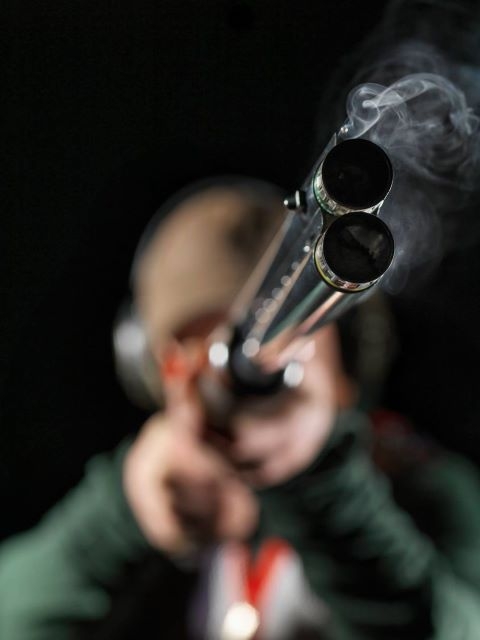
Instinctive shooting is perfection in motion for the upland hunter. Hard focus on the flushed bird, an unwavering swing of your shotgun, and upon feeling the stock touch your cheek pull the trigger to experience the instant gratification of your downed quarry. In the end, instinctive refers to your innate ability to subconsciously calculate the forward allowance and essentially rely on the pull-trigger signal from your eyes without your mind performing the mathematical gymnastics that would normally muck up the shot.
But when you substitute the word “instinctive” for “subconscious” a new world of possibilities opens for shotgunners plagued by visual cross dominance – the scourge of so many wing and clays shooters who are left-eye dominant and shoot right-handed (or vice versa). If you’re cross-dominant and shoot with both eyes open as prescribed by just about every expert, at the end of a day in the field you’ll probably be ready to toss that shotgun in the lake from the sheer aggravation of missing without knowing why.
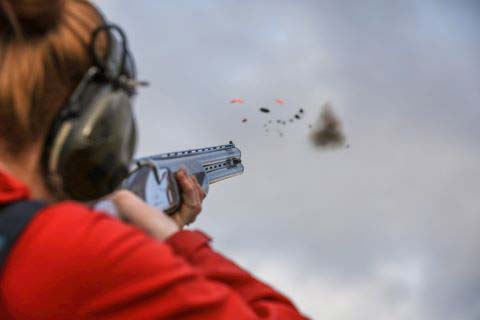 You can see the SP on the right of the center rib as the shooter smashes a target.
You can see the SP on the right of the center rib as the shooter smashes a target.I belong to the legion of long-suffering, cross-dominant, right-handed shooters who has been at war with his left eye. My fellow sufferers know the frustrating schemes we tolerate to overcome the deficiency. Gun fits, custom stocks, lessons, the blink, Chapstick on the left lense, Magic Dots, Magic Tape, fluorescent beads – enduring the exasperating litany of corrections “you’re behind it, you’re in front of it, focus on the target, shoot its headlights, shoot its taillights, blah, blah, blah.”
In the well-worn catalogue of prescriptions, the problem is assumed to be mechanical (or physiological if you prefer). But when you substitute “instinctive” for “subconscious” it becomes feasible that the solution you’ve spent countless hours and dollars pursuing has actually been dormant in your mind for all that agonizing time.
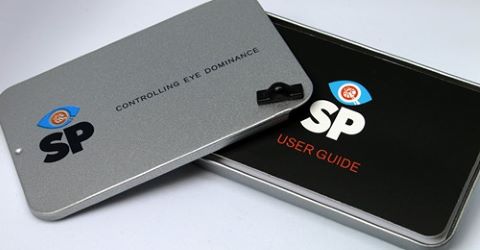 The SP ships in a reusable metal box.
The SP ships in a reusable metal box.When Robert Churchill, the father of instinctive shooting, asserts “Train the eye and front hand to take charge of these matters and learn their job without brain interference” he’s actually advocating a subconscious approach to shooting. For most of us, though, dealing with cross dominance feels like our subconscious is in a straightjacket relegated to the deepest dungeons of shotgunning hell. If we could get down into it, unlock it, the Churchill ideal can manifest itself in a glorious explosion of feathers and fluorescent shards against a bluebird sky.
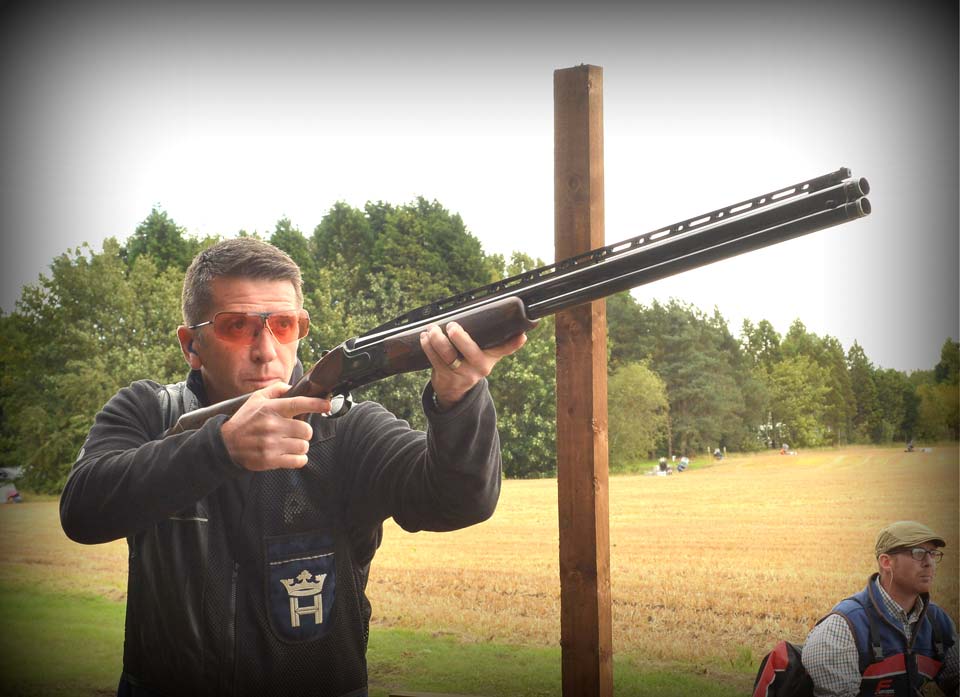 Steve Randles
Steve RandlesLike Churchill, Steve Randles is an Englishman who is taking a run at this problem with a cross-dominant solution called the SP (Shot Paraboloid). It’s a black, injection-molded profile that attaches to the mid-rib of an over/under with two-sided tape, at about one inch back from the muzzles.
With the SP, all the old trickery to subdue your off eye goes into the dust bin. For starters, after installing the SP, look down the barrel with both eyes open. Yes, you still see the double image of the barrel, but when chasing the target in flight your weaker right eye (for left-eye dominant shooters) is subliminally affected by the SP in a transference of strength to your shooting eye.
The SP creates a stimulant to one eye that helps ensure the shot picture is generated with the correct eye. By sparking the connection between the subconscious and peripheral vision, the SP is designed to strengthen target focus when shooting with both eyes open. The SP is a constant as you mount the gun so the picture continues the same in your peripheral vision. The “off” eye can’t see the SP – avoiding confusion.
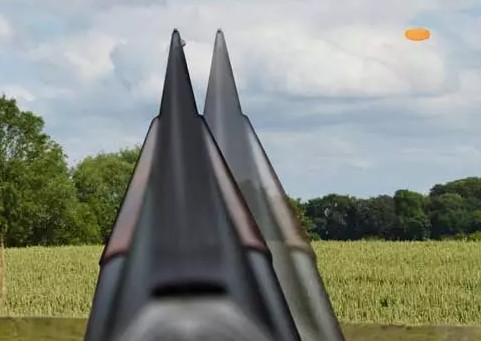 With the SP the correct barrel is identifiable and though not obvious in the image is easily recognizable in practice.
With the SP the correct barrel is identifiable and though not obvious in the image is easily recognizable in practice.Steve developed the SP during his own quest to punch up to higher classes in sporting clays tournaments. He took up clays shooting about 10 years ago after giving up motorcycle riding. Getting coached at a local shooting grounds, he ultimately plateaued at about 85 percent in his first five years.
As a right-handed shooter who had fluctuating dominance (and now has central dominance), he embarked on a long, futile journey of trial and error to find a remedy that would let him shoot with both eyes open. Finally, he turned to science.
Steve’s most influential findings came from a 1969 paper titled “The Effect of Practice on Binocular Rivalry Control.” It was written by Stanford University alum, Leon Lack, PhD, who was affiliated with the School of Psychology at the University of Adelaide in Australia.
“The Lack paper, along with the others, gave me some encouragement that visual control could be generated,” Steve explained. “The Lack paper talks about voluntary control. This was interesting, as it implied that control could be demonstrated by applied effort. I thought if that’s the case, if I did that with a shotgun, would it work for me? This proof of effective control of binocular vision further supported some of the other papers and articles that led me to developing the SP prototype.”
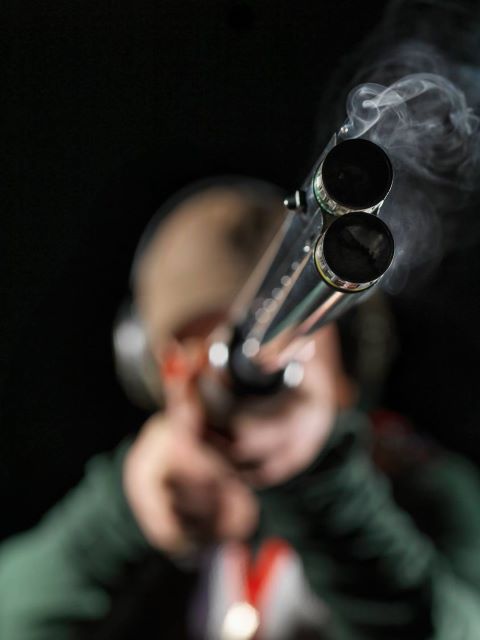 The SP is affixed to the shotgun barrel with double-sided tape.
The SP is affixed to the shotgun barrel with double-sided tape.While most cross-dominant solutions tend to be passive – for example obscuring the dominant eye – Steve’s breakthrough derived from his belief that he could achieve better results with a device that would actively stimulate the weaker, shooting eye to successfully achieve two-eyed shooting.
As an automotive and aerospace design engineer with 20-plus years of experience, Steve was professionally qualified to test his assumption. He tapped a professional in the field of optometry to round out the expertise necessary to develop the SP. They determined that a paraboloid-shaped dimple was the ideal shape to exert enough influence on the weaker eye without interfering with the target sight picture over the rib.
“It’s a small profile that doesn’t visually change a lot to your eye,” Steve said.
He emphasized that the SP is not to be focused on or used as a sight. It’s subtle and generally not obvious.
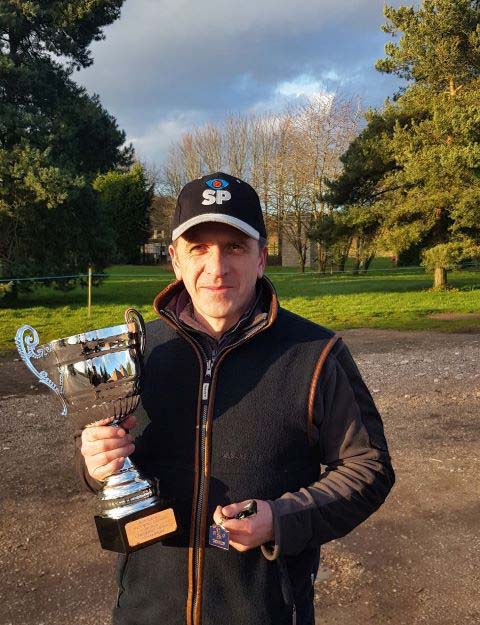 After developing the SP, Steve Randles’ clays-shooting scores improved.
After developing the SP, Steve Randles’ clays-shooting scores improved.Testing the prototype on himself, his scores went up three percent and he started winning shoots. By 2019, he had bootstrapped the SP into production and now, he claims, “We’re selling a lot of SPs” to people who shoot gun-up and gun-down.
One of Steve’s customers is noted British shooting instructor, gunmaker, author and outfitter, Chris Batha.
Chris talks about, on the SP web site, how he had experimented with it on himself and with a couple of clients and saw good results. But for Chris, who shoots left-handed, the aha moment came when shooting rabbit targets. He wrote “rabbits have always been my nemesis, days when I dust them and days when I miss them. After installing the SP, I am back to running rabbits with both eyes open and crushing them on all presentations.”
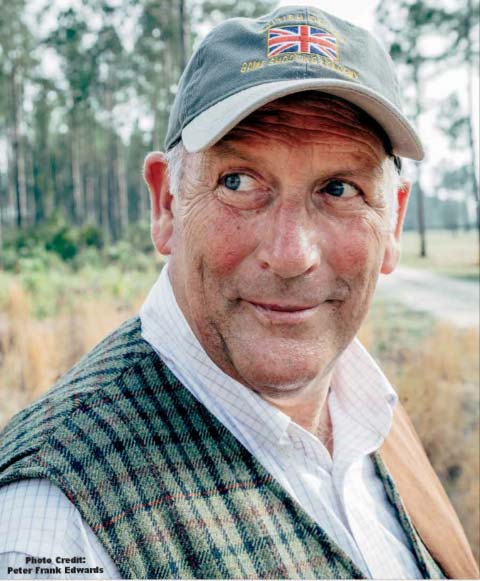 Chris Batha
Chris BathaI subsequently called Chris to get more information about his SP experience. He told me about a gentleman “who shoots very expensive shotguns and came to me for a lesson. He was told he had eye-dominance issues. He had been to several coaches over the years and had really good fundamentals, a well-fitted shotgun and had put a lot of time and practice into his shooting. But he was missing everything. I said I got one of these things (SP) from England, if you’re willing to try one. From the second I put it on, he shot some teal and hit them, and went to the skeet field for crossers. He called me back a week later and said he’s getting better. He said I never shot like this ever.”
Chris cautioned that “it’s not one size fits all, but I’ve fitted about a dozen of them. It isn’t an instant fix. It definitely works. You have to get used to it. You have to have faith in it and learn to ignore it, simply as that.”
I affixed the SP to my 12-gauge over/under clays gun and noticed better results on crossing targets such as skeet shots, and high quartering away shots. I still need more time to fully evaluate the SP, but for the time being it’s staying on my shotgun.
Irwin Greenstein is the Publisher of Shotgun Life. You can reach him at contact@shotgunlife.com.
Useful resources:

Irwin Greenstein is Publisher of Shotgun Life. Please send your comments to letters@shotgunlife.com.


Comments